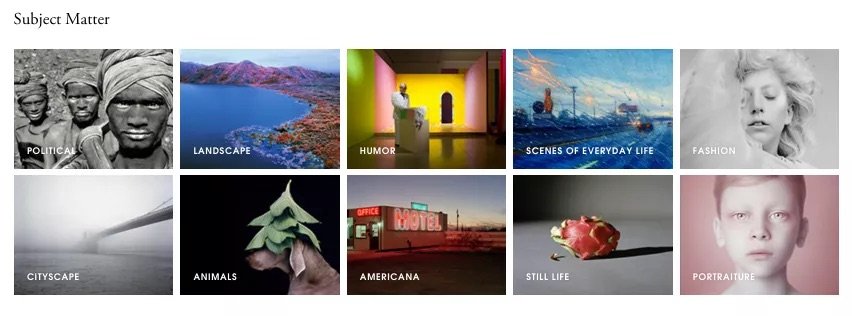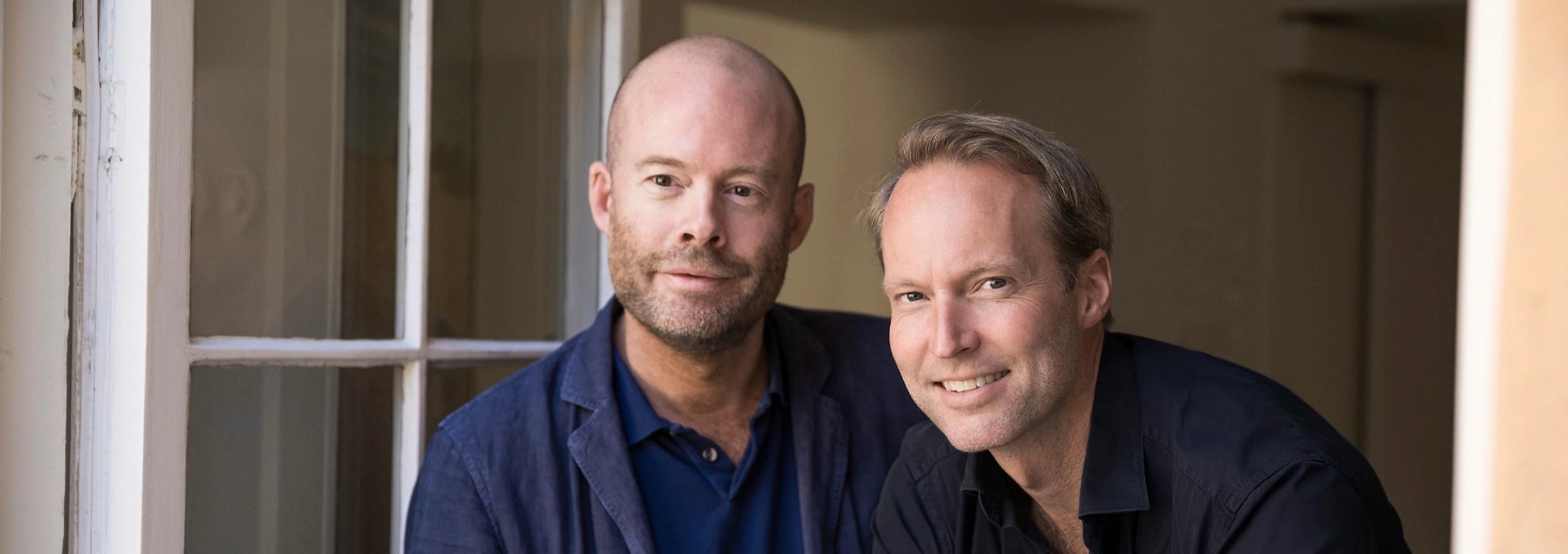Leaders of the Digital Art Market: A Focus on Artsy and Barnebys
With the art market's globalisation and the development of the internet these recent years, two online platforms have emerged: Artsy and Barnebys. Noted for their innovative services and role as intermediaries between professionals and consumers, they now dominate the digital art market in an international, globalised and connected context. Here’s why.
At the beginning of the 2010s, art professionals started to become interested in online art sales available on different channels. Indeed, establishing partnerships with specialised online search sites such as Barnebys or platforms acting as a gallery portal, one of the most reputable being Artsy, was an exciting alternative for art galleries or auction houses. As a result, it is now common to see different galleries and digital platforms merging or joining forces to offer the most complete service possible while remaining competitive.
A partnership with an online platform like Artsy can be advantageous. Created in 2009 by Carter Cleveland, Artsy has become the benchmark for the digital sale of works of art. Its main activity is developing and hosting gallery websites through which it can sell works of art. More recently, it also offers online sales services in partnership with auction companies like Sotheby's and Phillips.
Artsy logo
According to Anne-Sophie V. E. Radermecker and Sybille du Roy de Blicquy, Artsy hosts 4,000 galleries, 600 museums and institutions, 60 international fairs and a selection of sales on its website. The platform also presents more than 400,000 works and 50,000 artists, and thanks to its classification system - the Art Genome Project - Artsy enables its users to discover connections between artists. Regarding its clients, the platform has 600,000 registered users, 2.5 million monthly visits and 85,000 self-identified collectors. Its visitors come from all over the world and, since 2015, Artsy's total audience figures have doubled, and its overall magazine audience has quadrupled consistently every year. Moreover, the average distance between a buyer and a seller is 4,700 km, suggesting its significance as a wide-reaching, globally-recognised online platform. Finally, 50% of confirmed collectors who frequent Artsy have an average budget of $100,000 or more, which is extremely rare for online sales [1].
Art Genome Project, Category Examples. Courtesy Artsy.
Consequently, establishing such a beneficial partnership with an online platform makes it possible to develop the clientele and visibility of an art gallery in the business-to-client (B2C) market. Thanks to Artsy, companies can target a large, global and regionally diverse clientele. While Artsy has recently begun to develop the digital auction market, the platform is primarily positioned in the primary gallery market, enabling galleries to increase and stabilise traditional, fixed-price or over-the-counter art sales through channels.
Jenny Saville, Virtual, 2020. Oil on canvas, 78 3/4 x 63 in. © Jenny Saville. Courtesy Gagosian.
For example, the sale of this painting by Jenny Saville is an example of the successful and lucrative partnership between Artsy and Gagosian. Gagosian’s Artist Spotlight - an online initiative launched in April 2020 in response to the COVID-19 crisis, which featured a single work by a different artist every week - was concluded by the multi-million dollar sale of Jenny Saville’s enigmatic painting Virtual (2020) [2].
Christopher Barnekow and Pontus Silfverstolpe, the founders of Barnebys. Courtesy Barnebys.
By contrast, other platforms such as Barnebys have understood the challenge represented by the digitalisation of auctions. They have therefore offered an alternative to their partners to develop online art sales. Founded in 2011 by Christopher Barnekow and Pontus Silfverstolpe, Barnebys is a search engine for art, antiques and collectables auctions, present in more than 1,500 auctions worldwide. The services offered by Barnebys are the search of auction lots, an auction database, an estimation service, and, more recently, the auction software Skeleton [3].
The online auction software allows customers to streamline activity and offer everything in one place, and the latter can also choose graphics and content that best fit their brand. Therefore, from accepting objects, registering sellers and cataloguing to sales and freight solutions, Skeleton's rationale is to propose a user-friendly process to art businesses.
Barnebys logo. Courtesy of Barnebys.
In the same vein as other online information sites, including Artnet and Artprice, Barnebys also plays a significant role in the art market. This significance is primarily due to the importance of the information it provides to its users. These sites present a more transparent market by revealing prices and sales results. The offer is not limited to local galleries but extends globally. Therefore any company can make an initial estimate of the price of a work without having to contact an art expert directly or depend on the word of a dealer [4].
However, Barnebys offers partnerships with online market companies, in which the latter can advertise their products for sale on Barnebys interface. Since Barnebys promotes their artworks, businesses have to pay a monthly or annual subscription. Consequently, Barnebys users can discover the works for sale by art dealers and auction houses, but also the profile of their companies, and buy a piece of art by clicking on the thumbnail on the Barnebys interface, which links to the website of the art business that sells this art object. This indexing tool allows indirect online sales through the Barnebys sales channel and also increases the visibility of the auction or professional art partner. Moreover, this tool develops the sale of its works while offering an alternative to traditional online sales by highlighting digital public auctions.
If partnerships and B2B services can highlight Artsy and Barnebys successes, they are other reasons explaining their leadership. Both platforms are also renowned as social media specialists. Indeed, in the digital era, social networks are indispensable because they help promote art companies' profiles and the goods they sell. Social networks are thus very much in demand, with the publication of photographs of works and numerous comments [5].
According to the Hiscox annual report, 31% of collectors say they are influenced by social networks, specifically Instagram when buying art. This fact is particularly significant because, in 2017, Instagram overtook Facebook and Twitter as the world’s most popular social media platform for shopping, browsing and discovering products and services. On the other hand, approximately 91% of galleries surveyed by Hiscox say they actively use Instagram to promote their artists and spaces, and 57% of galleries consider Instagram the most effective social network.
Therefore, not only can Artsy and Barnebys provide social media visibility to their business-to-business (B2B) partners, but they may also propose marketing tools to develop the activity or sales of a company by promoting it in their own social media platforms. As of December 2022, Artsy has over 4.3 million combined followers on LinkedIn, Facebook, Instagram, and Twitter. Barnebys, on the other hand, has a less impactful social media community, with approximately 130,000 combined followers on Facebook, Instagram, Twitter and Linkedin. However, the Swedish-born company stands out more for its magazine, specifically designed for local markets, adapting to the French, UK and US markets’ specificities.
By constantly adapting their services to art professionals’ demands regarding the digital world while being responsive to consumers’ attempts and art market trends, Artsy and Barnebys are both very similar yet, at the same time, paradoxically opposed. The former specialised in the modern and contemporary primary art market, attracting major global art galleries and established collectors. The latter is a secondary market specialist allowing clients to access artwork information in one place and providing auction houses with digital solutions.
By offering advanced digital services, and online and global visibility to art businesses, Artsy and Barnebys became essential to the latter. Not only can the two platforms answer to businesses' needs, but their remarkable and constant adaptability to the digital age explains how they are still leading the digital art market for over a decade and maybe for the years to come.
Bibliography:
[1] Anne-Sophie V. E. Radermecker, Sybille Du Roy de Blicquy, « L’art et son marché », Dossiers du CRISP, 2018/1, n° 89, p. 92.
[2] Justin Kamp, “Gagosian's first "Artist Spotlight" viewing room series ended with the sale of a multi-million dollar Jenny Saville painting”, 17 August 2020, Artsy.net.
[3] Hiscox Online Art Trade Report 2015, 21 April 2015.
[4] Opt. cit., « L’art et son marché », Dossiers du CRISP, 2018/1, n° 89, p. 94.
[5] Ibid., p.95.
Noémie Ngako
Art Markets Co-Editor, MADE IN BED






